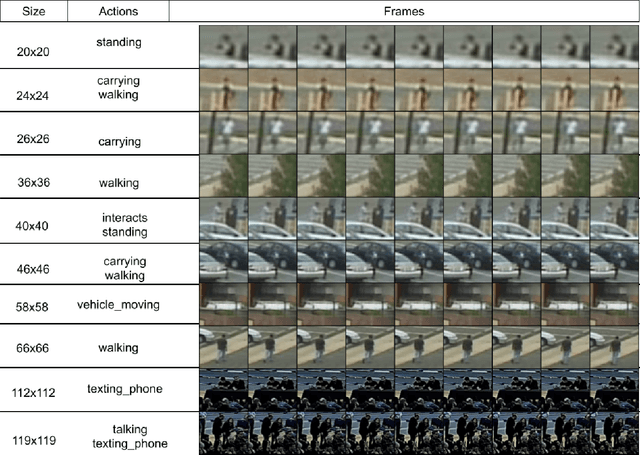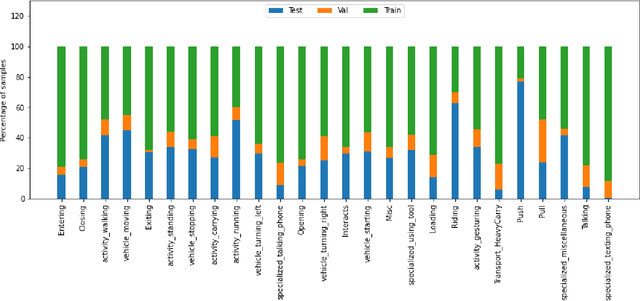Tushar Sangam
TransVisDrone: Spatio-Temporal Transformer for Vision-based Drone-to-Drone Detection in Aerial Videos
Oct 16, 2022



Abstract:Drone-to-drone detection using visual feed has crucial applications like avoiding collision with other drones/airborne objects, tackling a drone attack or coordinating flight with other drones. However, the existing methods are computationally costly, follow a non-end-to-end optimization and have complex multi-stage pipeline, which make them less suitable to deploy on edge devices for real-time drone flight. In this work, we propose a simple-yet-effective framework TransVisDrone, which provides end-to-end solution with higher computational efficiency. We utilize CSPDarkNet-53 network to learn object-related spatial features and VideoSwin model to learn the spatio-temporal dependencies of drone motion which improves drone detection in challenging scenarios. Our method obtains state-of-the-art performance on three challenging real-world datasets (Average Precision@0.5IOU): NPS 0.95, FLDrones 0.75 and AOT 0.80. Apart from its superior performance, it achieves higher throughput than the prior work. We also demonstrate its deployment capability on edge-computing devices and usefulness in applications like drone-collision (encounter) detection. Code: \url{https://github.com/tusharsangam/TransVisDrone}.
TinyAction Challenge: Recognizing Real-world Low-resolution Activities in Videos
Jul 24, 2021



Abstract:This paper summarizes the TinyAction challenge which was organized in ActivityNet workshop at CVPR 2021. This challenge focuses on recognizing real-world low-resolution activities present in videos. Action recognition task is currently focused around classifying the actions from high-quality videos where the actors and the action is clearly visible. While various approaches have been shown effective for recognition task in recent works, they often do not deal with videos of lower resolution where the action is happening in a tiny region. However, many real world security videos often have the actual action captured in a small resolution, making action recognition in a tiny region a challenging task. In this work, we propose a benchmark dataset, TinyVIRAT-v2, which is comprised of naturally occuring low-resolution actions. This is an extension of the TinyVIRAT dataset and consists of actions with multiple labels. The videos are extracted from security videos which makes them realistic and more challenging. We use current state-of-the-art action recognition methods on the dataset as a benchmark, and propose the TinyAction Challenge.
 Add to Chrome
Add to Chrome Add to Firefox
Add to Firefox Add to Edge
Add to Edge